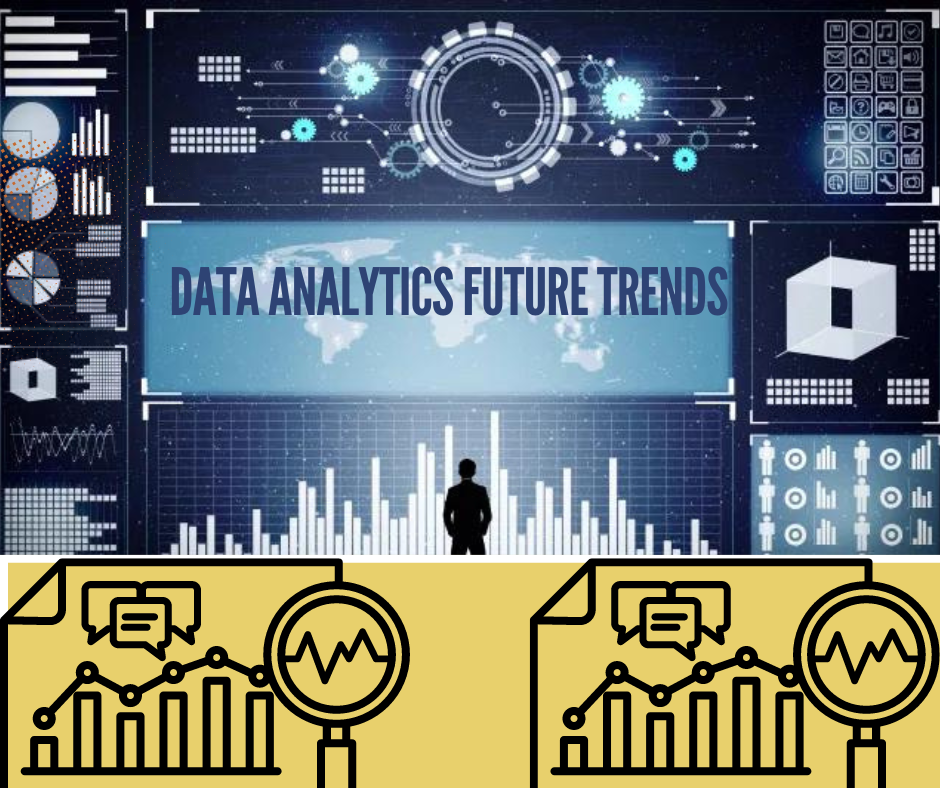Introduction to Data Analytics Trends
As data analytics continues to evolve, staying abreast of emerging trends is crucial for leveraging the full potential of data in decision-making processes. Data analytics, which involves examining and interpreting complex datasets to uncover actionable insights, is becoming increasingly sophisticated. Understanding future trends in this field can help businesses and professionals adapt to changing technologies and methodologies, ensuring they remain competitive and data-driven.
The current landscape of data analytics is characterized by rapid advancements in technology and methodologies, which are transforming how organizations collect, analyze, and utilize data. From enhanced machine learning algorithms to real-time data processing, the field is experiencing unprecedented growth. These developments are driven by the need for more accurate, timely, and actionable insights in an increasingly data-rich world.
Advancements in Artificial Intelligence and Machine Learning
Artificial Intelligence (AI) and Machine Learning (ML) are revolutionizing data analytics by enhancing the ability to analyze large datasets, uncover patterns, and make predictions. AI and ML techniques are increasingly integrated into analytics platforms, enabling more sophisticated data processing and insights generation.
1. Integration of AI and ML:
AI and ML algorithms are designed to learn from data and improve over time without explicit programming. This capability is transforming data analytics by automating complex tasks that previously required human intervention.
2. Impact on Predictive Analytics:
Predictive analytics is one of the most significant applications of AI and ML in data analytics. By analyzing historical data, ML models can identify patterns and predict future events or behaviors.
3. Automation and Efficiency:
The integration of AI and ML into analytics tools enhances automation and efficiency. For instance, AI-powered data visualization tools can automatically generate reports and dashboards, reducing the time and effort required for manual reporting.
Growth of Real-Time Analytics
Real-time analytics refers to the process of continuously analyzing data as it is generated or collected. This capability is increasingly crucial as organizations seek to make timely decisions based on the most current information available.
1. Definition and Significance:
Real-time analytics involves processing and analyzing data instantly, providing immediate insights and feedback. This is particularly valuable in scenarios where timely decisions are critical, such as in financial trading, fraud detection, or operational monitoring.
2. Technologies Enabling Real-Time Analytics:
Several technologies are driving the growth of real-time analytics. Stream processing platforms, such as Apache Kafka and Apache Flink, allow for the continuous processing of data streams.
3. Use Cases and Benefits:
Real-time analytics offers numerous benefits across various industries. In retail, it enables personalized marketing by analyzing customer behavior as it happens. In manufacturing, real-time monitoring of equipment can predict maintenance needs and prevent downtime.
Rise of Augmented Analytics
Augmented analytics represents a significant shift in data analysis, enhancing the ability to generate insights through advanced technologies like artificial intelligence (AI) and machine learning (ML). This trend aims to democratize data analytics by making sophisticated tools more accessible to users, regardless of their technical expertise.
1. Concept and Features:
Augmented analytics leverages AI and ML to automate data preparation, analysis, and insight generation. Key features include natural language processing (NLP), which allows users to interact with data using conversational queries, and automated insights that surface key findings without manual intervention.
2. Role of NLP and Automated Insights:
Natural language processing enables users to ask questions and get answers in plain language, transforming how people interact with data. For example, users can type or speak queries like "What were our sales trends last quarter?" and receive understandable, actionable insights. Automated insights, generated by AI algorithms, identify patterns, trends, and anomalies in data, offering users recommendations and predictions without requiring deep data analysis skills.
3. Enhancing Decision-Making and Accessibility:
Augmented analytics enhances decision-making by providing more actionable insights quickly and accurately. It reduces the time spent on manual data manipulation and allows users to focus on interpreting and applying insights. For organizations, this means more agile and informed decision-making processes.
Expansion of Data Privacy and Governance
As data becomes increasingly valuable, the importance of data privacy and governance grows. Organizations are under greater pressure to manage and protect data in compliance with evolving regulations and standards.
1. Focus on Data Privacy Regulations:
The rise of data privacy regulations such as the General Data Protection Regulation (GDPR) in Europe and the California Consumer Privacy Act (CCPA) in the United States reflects a growing emphasis on safeguarding personal data. These regulations require organizations to implement stringent measures for data protection, including obtaining consent for data collection, ensuring data accuracy, and providing individuals with rights over their data.
2. Trends in Data Governance and Compliance:
Data governance involves creating policies and procedures for managing data assets effectively. Emerging trends include the implementation of data governance frameworks that ensure data quality, security, and compliance.
3. Tools and Practices for Data Security:
To address data privacy and governance challenges, organizations are adopting advanced tools and practices. Data loss prevention (DLP) solutions, encryption technologies, and access controls are critical for protecting sensitive data. Regular audits and compliance checks help ensure that data practices align with regulations.
Emergence of Edge Analytics
Edge analytics is becoming a crucial trend in the data analytics landscape, driven by the need to process data closer to its source. This approach involves analyzing data on-site or at the "edge" of the network, rather than sending it to a central data center or cloud for processing.
Edge analytics refers to the practice of performing data analysis on the edge devices themselves, such as IoT sensors, gateways, or local servers. This method reduces latency by processing data in real-time at or near the source, which is essential for applications requiring immediate insights. The main advantages include faster decision-making, reduced bandwidth usage, and enhanced operational efficiency.
Edge analytics is particularly beneficial for Internet of Things (IoT) applications where devices generate large volumes of data. For example, in smart manufacturing, edge analytics can monitor machinery performance and predict failures before they occur, minimizing downtime. Similarly, in agriculture, sensors on farm equipment can analyze soil conditions and weather data in real-time to optimize crop management. This localized processing ensures that critical data is acted upon swiftly and efficiently.
By processing data locally, edge analytics significantly reduces latency compared to traditional cloud-based or centralized processing. This immediacy is crucial for scenarios like autonomous vehicles, where split-second decisions are required. Moreover, edge analytics improves data processing efficiency by reducing the need to transmit large volumes of data over networks, which can also enhance privacy and security by keeping sensitive data local.
Growth of Cloud-Based Analytics
Cloud-based analytics is transforming how organizations store, manage, and analyze data by leveraging cloud computing infrastructure.
1. Advantages of Cloud-Based Solutions:
Cloud-based analytics offers several advantages over traditional on-premises solutions. It provides scalable computing power and storage, enabling organizations to handle large datasets without investing in physical hardware.
2. Trends in Cloud Data Storage and Computing Power:
Recent trends include the growth of serverless computing and managed services that simplify data management. Serverless computing allows organizations to run analytics without managing servers, while managed services like Amazon Redshift or Google BigQuery provide robust analytics capabilities with minimal setup.
3. Key Players and Innovations:
Major cloud providers such as Amazon Web Services (AWS), Microsoft Azure, and Google Cloud Platform (GCP) are continually innovating in cloud analytics. These platforms offer integrated tools for data processing, visualization, and machine learning, enabling comprehensive analytics solutions.
Conclusion
The future of data analytics is marked by transformative trends such as the rise of AI and machine learning, real-time analytics, augmented analytics, edge computing, and cloud-based solutions. These advancements promise to enhance data processing, decision-making, and operational efficiency. To stay ahead in this rapidly evolving field, continuous learning and skill development are essential. For those looking to build a robust foundation in data analytics, pursuing Data Analytics Training in Delhi , Goa, Ludhiana, etc, offers valuable opportunities. This training equips professionals with the latest skills and knowledge, preparing them to leverage emerging trends and drive data-driven success in their careers.






Comments